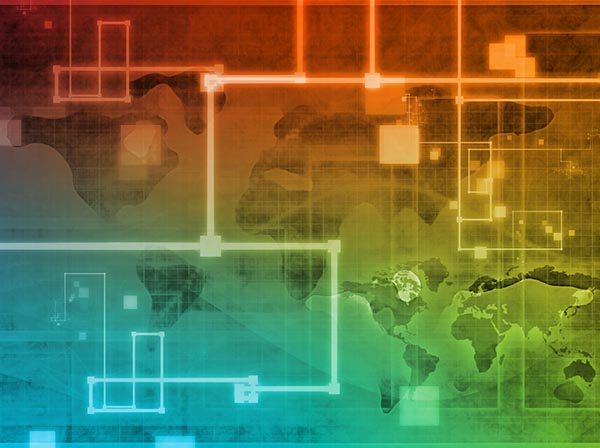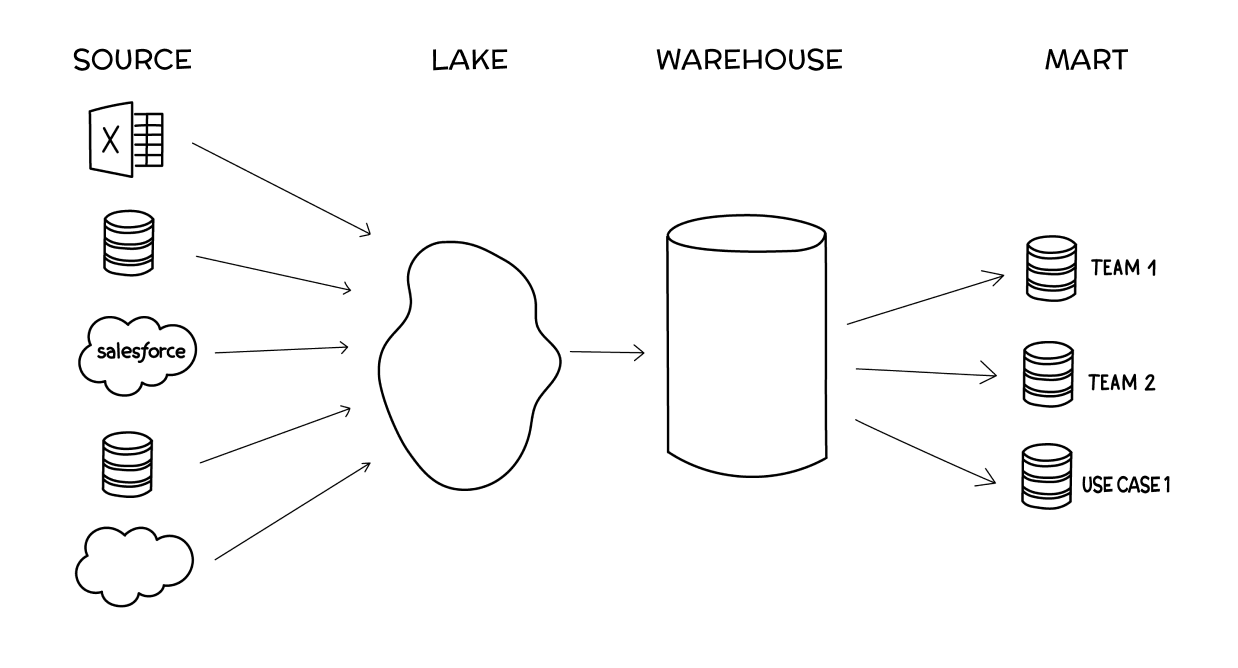5 Reasons Why You Should Code Daily As A Data Scientist
By coding on a daily basis, you will gain the ability to integrate Data Science
or other elementary concepts into your programming of developmental projects.
The best part about practicing to code each day is it allows you, the coders, to
subconsciously develop an innovative skill where you can solve computational
tasks in the form of code. By gaining more information and learning more
details, you can use code blocks more effectively and efficiently to solve
complex programming architectures. You can even find solutions to Data Science
tasks that you might have otherwise struggled with because you are in touch with
the subject. And it also helps you gather discrete and more innovative ideas for
implementation faster. This point is quite self-explanatory. Coding daily will
sharpen your deduction abilities and tune you into a better programmer. By
following the accurate principles of coding, you can improve your skills to the
next level and develop yourself into an ultimate genius of programming. For
example, let us take into consideration the Python programming language, which
is most commonly used for Data Science. By developing your coding skills in
Python, you are also advancing your skill level of Data Science to code complex
Data Science projects.
Privacy and Security Are No Longer One-Size-Fits-All

Historically, relationships can be challenging cross-divisionally between
InfoSec, IT, Legal, and business or product teams in the sense that the internal
conversations and ongoing education required for these teams to sync on
protocols and security measures can be extensive. Moreover, policy enforcement
between these teams without proper technical safeguards can result in the
accidental ー or in rare instances, malicious ー leakage of data that would put
an individual or business’ reputation at risk. By taking a more contextual,
technically enforced approach to data governance, the all-too-common risks
associated with human-led processes can be eliminated and in turn, improve
collaboration and enforcement between these internal teams. When the right
technical controls are in place based on the data context, using
privacy-enhancing techniques or in partnership with a reliable technology
partner, enterprises no longer have to rely on the manual human processes that
may lead to sensitive data leakage or re-identification risk. Only this
alignment between internal teams will allow an enterprise’s overall data
strategy to flourish. Many of the world’s most successful companies, such as
Amazon or Unilever, have gained sizable market share through data collaboration,
starting within their own enterprise.
Providing Customer-Driven Value With A ToGAF® Based Enterprise Architecture

The concept of value needs to be mastered and used by enterprise architects in
a customer-driven enterprise, as shown in Figure 1 above. An organization
usually provides several value propositions to its different customer segments
(or persona) and partners that are delivered by value streams made of several
value stages. Value stages have internal stakeholders, external stakeholders,
and often the customer as participants. Value stages enable customer journey
steps, are enabled by capabilities and operationalized by processes (level 2
or 3 usually). The TOGAF® Business Architecture: Value Stream Guide video
provides a very clear and simple explanation, should you want to know more.
Customer journeys are not strictly speaking part of business architecture, but
still, be very useful to interface with business stakeholders. These value
streams/stages cannot be realized out of thin air. An organization must have
the ability to achieve a specific purpose, which is to provide value to the
triggering stakeholder, in occurrence the customers. This ability is an
enabling business capability. Without this capability, the organization cannot
provide value to triggering stakeholders (customers). a capability enables a
value stage and is operationalized by a business process.
A Brief History of Metadata

A primary goal of metadata is to assist researchers in finding relevant
information and discovering resources. Keywords used in the descriptions are
called “meta tags.” Metadata is also used in organizing electronic
resources, providing digital identification, and supporting the preservation
and archiving of data. Metadata assists researchers in discovering
resources by locating relevant criteria and providing location information.
In terms of digital marketing, metadata can be used to organize and display
content, maximizing marketing efforts. Metadata increases brand visibility
and improves “findability.” Different metadata standards are used for
different disciplines (such as digital audio files, websites, or museum
collections). A web page, for example, a may contain metadata describing the
software language, the tools used to create it, and the location of more
information on the subject. ... Metadata found online and in digital
marketing is a crucial tool for modern marketing. Metadata can help people
find a website. It makes web content more searchable, and when used
efficiently, metadata can increase the number of visits.
Center for Applied Data Ethics suggests treating AI like a bureaucracy
People privileged enough to be considered the default by data scientists and
who are not directly impacted by algorithmic bias and other harms may see
the underrepresentation of race or gender as inconsequential. Data Feminism
authors Catherine D’Ignazio and Lauren Klein describe this as “privilege
hazard.” As Alkhatib put it, “other people have to recognize that race,
gender, their experience of disability, or other dimensions of their lives
inextricably affect how they experience the world.” He also cautions against
uncritically accepting AI’s promise of a better world. “AIs cause so much
harm because they exhort us to live in their utopia,” the paper reads.
“Framing AI as creating and imposing its own utopia against which people are
judged is deliberately suggestive. The intention is to square us as
designers and participants in systems against the reality that the world
that computer scientists have captured in data is one that surveils,
scrutinizes, and excludes the very groups that it most badly misreads. It
squares us against the fact that the people we subject these systems to
repeatedly endure abuse, harassment, and real violence precisely because
they fall outside the paradigmatic model that the state — and now the
algorithm — has constructed to describe the world.”
Can IoT accelerate a return to offices?

Thanks to recent developments, both the Internet of Things (IoT) and the
Industrial Internet of Things (IIoT) are making Internet-enabled devices an
increasingly common feature in business. This trend was already on the
upswing prior to the global lockdown, with 46% of IT, telecommunications,
and business managers saying their organizations had already invested in IoT
applications and/or services, while another 30% were readying to invest in
the next 12-24 months. But with millions of workers now working and
communicating virtually from remote locations, the role of IoT in helping to
realize the vision of the smart enterprise has drawn even greater interest.
For one thing, IoT has gained traction as an enabler of productive remote
work and unhindered team collaboration across industries, said Igor Efremov
the head of HR at Itransition, a Denver, US-based software development
company. Sectors that formerly could not continuously function without human
labor such as manufacturing, can now rely on IIoT infrastructure including
sensors, cameras, and endpoints to allow technicians to monitor and maintain
asset performance in real time, without actually being physically
present.
Is there a human consequence to WFH?

There is no such thing as a perfect work/life balance, of course. And while
some employers understand the stress faced by their workers, not all do:
Switched-on employers who care about their staff provide employee choice
schemes, target-related bonuses, personal support, subsidized Wi-Fi, and a
judgement-free attitude toward sick days. Those who don’t, insist workers
stay on camera all day and refuse to accept excuses for absence on the basis
of child care or any other need, while indulging in fire and re-hire
policies. To a great extent, corporate responsibility around employee care
in this environment has effectively been outsourced to employees themselves,
even as productivity (and working hours) increase. And while Apple’s devices
and third-party apps can help remote workers manage time more effectively,
the need for all parties to develop new ways of working that don’t impact
personal space remains challenging. This isn’t a platform-specific matter,
of course: Windows or Mac, Android or iPhone, iPad or some other tablet,
enterprise workers of every stripe face complex challenges as they juggle
work and personal responsibilities.
You Should Master Data Analytics First Before Becoming a Data Scientist

As a Data Scientist, you will have to perform feature engineering, where you
will isolate key features that contribute to the prediction of your model.
In school or wherever you learned Data Science, you may have a perfect
dataset that is already made for you, but in the real world, you will have
to use SQL to query your database to start finding the necessary data. In
addition to the columns that you already have in your tables, you will have
to make new ones — usually, these are new features that can be aggregated
metrics like clicks per user, for example. As a Data Analyst, you will
practice SQL the most, and as a Data Scientist, it can be frustrating if all
you know is Python or R — and you can not rely on Pandas all the time, and
as a result, you cannot even start the model building process without
knowing how to efficiently query your database. Similarly, the focus on
analytics can allow you to practice creating subqueries and metrics like the
one stated above so that you can add a few to at least, say 100, new
features that are completely created from you that could be more important
than the base data that you have now. ... A Data Analyst usually will master
visualizations because they have to present findings in a way that is easily
digestible for others in the company.
Introduction - The 4 Stages of Data Sophistication

Companies today are quite good at collecting data - but still very poor at
organizing and learning from it. Setting up a proper Data Governance
organization, workflow, tools, and an effective data stack are essential
tasks if a business wants to gain from it’s information. This book is for
organizations of all sizes that want to build the right data stack for them
- one that is both practical and enables them to be as informed as possible.
It is a continually improving community driven book teaching modern data
governance techniques for companies at different levels of data
sophistication. In it we will progresses from the starting setup of a new
startup to a mature data driven enterprise covering architectures, tools,
team organizations, common pitfalls and best practices as data needs expand.
The structure and original chapters of this book were written by the
leadership and Data Advisor teams at Chartio, sharing our experiences
working with hundreds of companies over the past decade. Here we’ve compiled
our learnings and open sourced them in a free, open book.
Data Residency Compliance with Distributed Cloud Approach

Rather than providing a centralized solution for everything, a distributed
cloud can meet each specific customer and country requirement. It also gives
enterprises the ability to properly use their original investments in
existing central clouds while executing a unified cloud strategy for
location-based data needs. This is especially important when customers are
looking to utilize SaaS solutions that depend on central clouds since they
often can’t easily localize data independently. Hybrid clouds were
originally intended to enable a unified strategy. Yet, enterprises continue
to struggle to get the level of value they initially expected out of their
private cloud deployments, especially in compliance-centric use cases where
ongoing research and expertise is needed. However, enterprises can now
consider a distributed cloud-based offering such as ‘Data
Residency-as-a-Service’ to meet global compliance standards. As businesses
look to expand into new countries that require data sets to be localized in
different regions, it’s essential to stay ahead of these challenges or they
risk losing business in the region altogether.
Quote for the day:
"Brilliant strategy is the best
route to desirable ends with available means." -- Max McKeown
No comments:
Post a Comment